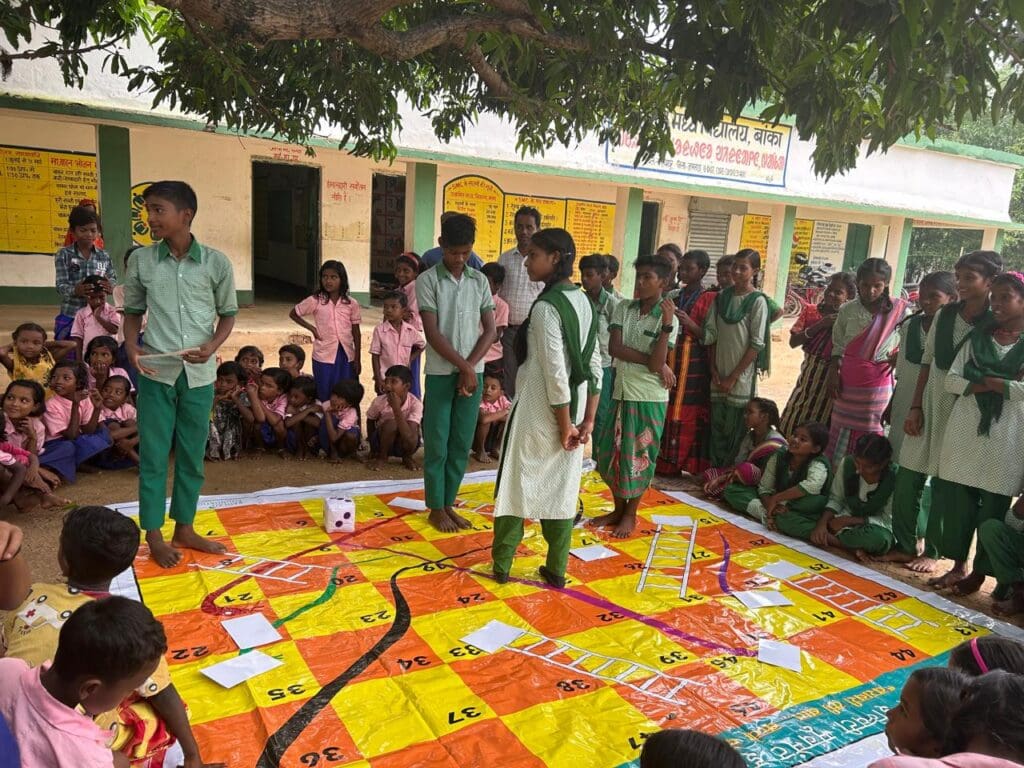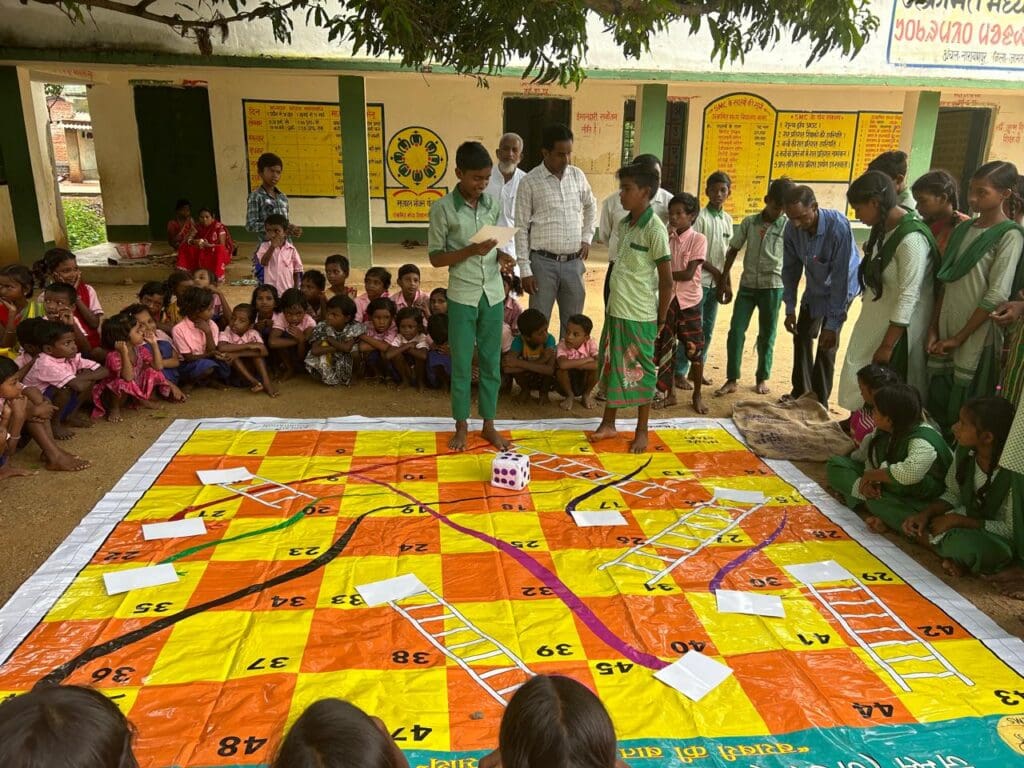
Promoting Gender Equity through participatory techniques: The Snake and Ladder Game under GEMS
Media Contact
ICRW Asia has been implementing the GEMS (Gender Equity Movement in Schools) program in over 270 schools across two districts (Jamtara and Godda) in Jharkhand. GEMS is an evidence-informed gender-transformative program to foster gender equality, redefine masculinity and negate all forms of violence to create safer and gender-equitable schools; enhance educational aspirations of and for girls; and increase school retention of girls. Situated within the public school system, the GEMS program draws its approach and strategies from four conceptual pillars – starting at a young age, engaging both girls and boys in the gender discourse, and using gender transformative approaches in institutional settings for normative change. It uses a combination of the cognitive-affective approach and life skills, undertaken in the school setting, to bring transformative and sustained changes toward gender equality and violence prevention.

Over the years, the program has made use of multiple participatory techniques, such as role plays, games, debates, in addition to classroom discussions to promote the agenda of gender equity in schools. One such participatory technique that has been promoted in schools under the program is the Snake and Ladder game for students and teachers, inspired by the popular children’s board game in which players take turns in rolling a die to either move up the ladder or fall by landing on the snake’s mouth. In this version of the game, a snake and ladder banner is used and cards with positive messages on gender equity are placed at the mouth of the ladder whereas those with negative messages are placed at the mouth of the snake on the banner of the game. Through the game, students and teachers are made aware of behaviours and actions that promote gender equity (when they land on the ladder), as well as those that inhibit it (when they land on the snake). For instance, if a student reads out a message found on the ladder box, it is likely to be one that reinforces a gender equitable behaviour, such as, equitable division of household work between boys and girls. Similarly, if a student reads out a message on the snake box, it will be one that reinforces a gender inequitable behaviour, for instance, prohibiting girls from studying in schools.
Over the last few months, all GEMS intervention schools in the state have been provided with the snake and ladder printed banner, as well as message cards and have been encouraged to use the game as a way of initiating conversations around gender equity and inclusion. The Snake and Ladder banner is placed in an open space so that all children can easily stand around it and watch the game. These message cards provided with the game contain messages related to gender equitable behavior, violence, child marriage and economic aspirations, among others. As a part of this exercise, two or more students are invited to play the game. After the game starts, as participants move forward, depending on which box they reach, they are expected to read out the message on either the ladder box or the snake box, to everyone. Based on the message which is read out by the students, teachers are encouraged to pose questions and initiate discussions with students.
 The game has been received very well by the schools and has elicited widespread participation from students. Across schools, teachers have said that students look forward to playing the game and often do so, without being directed by the teachers. Teachers have also found this method of initiating discussions on gender equity to be more engaging than classroom sessions, as they have found a greater number of students participating in the discussions held during the game, in comparison to other techniques. Additionally, the game has seen equitable participation from both boys and girls. It has also contributed to critical thinking around key issues of gender equity: household division of labour, women’s right to study and work, marriage norms as well as gender-based violence, and facilitated peer discussions on the same. Teachers added that many students have discussed the game and its messages with their siblings as well as parents, leading to some conversation on gender equitable attitudes within households.
The game has been received very well by the schools and has elicited widespread participation from students. Across schools, teachers have said that students look forward to playing the game and often do so, without being directed by the teachers. Teachers have also found this method of initiating discussions on gender equity to be more engaging than classroom sessions, as they have found a greater number of students participating in the discussions held during the game, in comparison to other techniques. Additionally, the game has seen equitable participation from both boys and girls. It has also contributed to critical thinking around key issues of gender equity: household division of labour, women’s right to study and work, marriage norms as well as gender-based violence, and facilitated peer discussions on the same. Teachers added that many students have discussed the game and its messages with their siblings as well as parents, leading to some conversation on gender equitable attitudes within households.
The widespread uptake of the game in schools is reflective of the critical role of participatory techniques in engaging with school going adolescents on issues of gender equity and inclusion. The game has encouraged active engagement, collaboration and critical thinking among students, on the question of challenging gender stereotypes, addressing power imbalances and promoting gender equality – all key components of the program.
